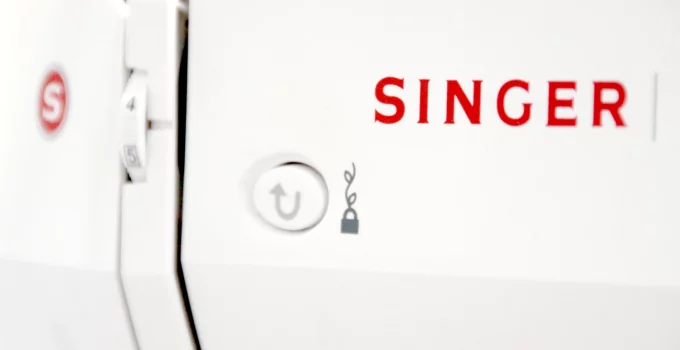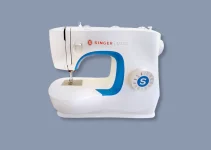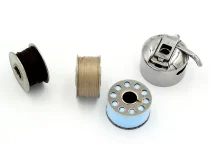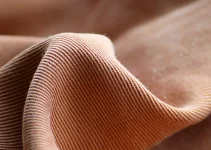The most famous and best sewing machine brands have interesting histories that I want to cover in this article. If you’re in for a very short history recap, you’ll love this article.
However, we’re definitely interested in more than the history of these brands. We especially want to know what makes their models special.
It will be wonderful to see how these manufacturers helped so many men and women express their creativity and their talents.
Although there are quite a few brands to pay attention to, I hope this article will provide a clearer picture on the best manufacturers of sewing machines.
The best sewing machine brands are:
- Singer
- Brother
- Juki
- Janome
- Bernina
- Pfaff
- Husqvarna Viking
Check out my reviews for the best sewing books if you want to learn more about machine sewing, whether you’re a beginner or a more experienced sewer.
Best Sewing Machine Brands: The 7 at the Top
If you search for the best sewing machines, the most frequently mentioned brands will be Brother, Singer, Bernina, Juki, and Janome. Pfaff and Husqvarna Viking are also excellent. You can’t go wrong with either but it remains to be seen what makes them stand out.
1. Singer
Let’s start with the name that everyone recognizes. Even a person who hasn’t held a needle in his/her hand can recognize the famous name of Singer.
You might even have thought of discovering an antique Singer and selling it for a considerable profit. For example, a Red S Singer Featherweight was sold for $2,100 but those are the rare cases. Usually, the prices for vintage models don’t exceed $300.
I’ll admit that it might have crossed my mind. Not exactly for selling it but more for the purpose of bragging that I came across an antique Singer in the attic of some old relative. It was never the case for me.
However, the important thing in all this is that Singer is still considered one of the best sewing machine brands if not the singular best.
If you do a bit of browsing, you’ll mainly come across two major brands: Singer and Brother. They will be followed by Juki and Janome. These four seem to be the preferred options for regular consumers and maybe even for professionals.
The history of Singer
In 1850, Isaac Merritt Singer manufactured the first straight stitch sewing machine, naming it Standard 1. This was the world’s first practical sewing machine.
In 1853, the factory was relocated to New York and the name of the company was changed to Singer Manufacturing Company, the first machines manufacturers were sold at $100.
That’s how the revolution in sewing started. A hatter was able to loop 7 times in a minute but Singer did the same 347 times in a minute. Sewing a man’s shirt took 14 hours by hand, while a machine did it in 1 hr 16 min.
In 1855, this brand won the first prize in sewing machines at World’s Fair in Paris. It also became the largest selling brand of sewing machines internationally.
In 1856, Singer became the first company to initiate sales on installments. It also became the first multinational/global company in 1857.
In 1950, marking the 100th anniversary of its incorporation, Singer had a $307.8 million sales figure.
In 2017, the company launched the world’s first Sewing Assistant App for sewing help for everyone, wherever they might be.
You can read more about their history on their website.
Are Singer sewing machines good?
This is one of the most popular brands in the world. In a nutshell, Singer sewing machines are very good. They’re certainly not perfect so each model will come with negative reviews, as it’s always the case with pretty much everything we buy.
The other good news is that their machines fit a variety of budgets. Whether they are budget or more expensive models, the focus is on durability, high quality, and ease of use.
If your budget is above $200 and you’re looking for one of the best Singer models on the market, you might want to check out the Singer 4423. It’s certainly appreciated by professionals and very praised. Beginners will have to read the manual, paying close attention to the instructions, and take a bit of time to actually learn how to use it.
For a budget just slightly above $100, I recommend the MX231 or the MX60. They’re more basic but they can be perfect for beginners and amateur sewists.
Under $100, you can check out the Singer M1000.
2. Brother
I talked about the most recognizable brand in this industry and we’ve seen how things have evolved for them.
Now, it’s time to talk about the brand that can be considered the closest competitor for Brother. It’s one of my favorites among these picks for the best sewing machine brands.
It might not have the same instant recognition as Singer but it’s a fantastic manufacturer.
The history of Brother
It’s a history spanning over 100 years with a presence in 44 countries.
This company was founded by the Yasui brothers after they inherited the Yasui Sewing Machine Co. from their father.
The new Yasui Brothers’ Sewing Machine Company is the beginning of Brother, which starts with the manufacturing of a Japanese sewing machine that will surpass machines manufactured overseas in 1928.
In the 1959s, the company known as Brother International Corporation was born.
It went public in 1972 in order to finance its rapid product expansion. At that time, it made history as it made Brother the first company in Wall Street’s history with 50% foreign ownership.
In 1979, the company produced the Computer-Sew 1000, the first computerized home sewing machine, which continued Brother’s trend as industry leader.
From a $200 million company in 1984 it became a $1 billion company in 1997. Talk about impressive growth in a short time span.
According to their website, to this day, the company continues its unprecedented growth as an industry leader.
Are Brother sewing machines good?
They absolutely are. Brother describes their products as revolutionary, state-of-the-art lineup of home sewing, embroidery, quilting, and crafting machines. They certainly see themselves as pioneers in this wonderful, complex industry.
For a medium budget, around $200, I recommend the Brother CS60001, which is a sewing and quilting machine. It’s pretty impressive for the price.
Another option in the same price range is the Brother XR9550, which is computerized and has 165 built-in stitches. It’s very nice for beginners and amateurs.
The Brother ST150HDH is another impressive, heavy-duty machine with an affordable price tag. I love it a lot.
They also have the Brother SE1900 Sewing and Embroidery Machine that costs around $1,000. It’s one of the best embroidery machines for beginners. It includes a speed control button and an automatic thread cutter.
Nevertheless, if your budget is under $100, there’s a high chance that you won’t be able to buy a new Brother sewing machine. The XM2701 is about the cheapest Brother you could get.
At about $160, you can get the Brother XR3774. That’s another one of the cheapest for this brand.
Singer wins in this aspect because it also has some models for lower budgets. And Singer also make handheld sewing machines, which Brother doesn’t.
Brother is also famous for mostly manufacturing sewing machines with drop-in bobbin.
Is Singer or Brother better?
They’re both two of the best sewing machine brands and I cannot say that one is definitely better than the other. If you want a more in-depth comparison between these two popular manufacturers, read my Singer vs Brother analysis.
If we were to compare them based on user reviews left on various popular online marketplaces, I think Brother will come slightly ahead. However, take into consideration that that is just my impression from the research I’ve done. It’s not based on numbers, just on my personal impressions.
Singer remains popular for durability and longevity. Their models, no matter the price tag, are made to last. They can cope with everything.
The Singer Heavy Duty 4423 remains one of the best sewing machines that can even handle leatherwork and it can also be used for making wigs. It’s amazingly versatile and so well made, a powerhouse in all aspects. And it has a very great price. It’s certainly a top favorite of mine.
On the other hand, Brother is also at the top of the list for me. They’re reliable, high quality, and they excel with various models, whether you’re looking for inexpensive sewing machines, heavy-duty machines, electronic type, home sergers, embroidery, etc.
If you want to compare them and decide for yourself, I recommended a few models from both manufacturers. Check those out and see what you think. Which is better, Singer or Brother?
3. Juki
This manufacturer made its name in the global industrial sewing market and then turned to delivering the same high quality to commercial home buyers.
However, their machines are on the expensive side. You’ll definitely have no chance of buying a new Juki for $100 or so. You should think of having a budget around $500-$1,000 and even more.
The history of Juki
This is a newer company than Brother and Singer but it still deserves to be among the best sewing machine brands.
The original home sewing machine was launched in 1945 but later on, Juki grew to become an industrial sewing machine giant. It launched the sale of industrial sewing machines in 1953.
Juki made revolutionary advancements in home technology by developing the first rotary needle thread, the first automatic thread trimmer and auto needle threader in 1978, and the first auto thread tension system in 1985.
In 1981, Juki Corporation received the Deming Prize for quality control in the manufacture of industrial sewing machines.
According to their own statement, Juki is the leader in global industrial sewing that brings home a line that people can trust to perform with the perfection of their commercial machines.
Are Juki sewing machines good?
They are very good but not as accessible as Singer and Brother for those with lower budgets.
Juki also doesn’t have as many models to choose from. It’s pretty obvious that their main focus has been on the industrial side. They still remain one of the best sewing machine brands.
Their machines tend to be on the pricey side. It’s not uncommon to come across multiple models that cost over $1,000 or even $1,500.
One recommendation would be the Juki HZL-F600 but you need a generous budget of about $1,000 if you want it.
Juki TL-2010Q is a powerhouse that can handle absolutely any project, especially those that involve heavy-weight fabrics, leather included. It’s also one of the best sewing machines for making clothes.
In the affordable area, you’ll find the Juki MO-623 at almost $300. In the same price range, we also have the Juki MO654.
4. Janome
Janome, as one of the best sewing machine brands, is all about innovation. It got its name by introducing a round metal bobbin system and it defined its trajectory with the Memory machines.
The history of Janome
This is a brand with a history almost as long as Stinger. It all began in 1860 when William Barker and Andrew J. Clark began producing the “New England Single Thread Hand Sewing Machine” in Orange, Massachusetts. It began as an all American brand.
In 1882, the name changed to New Home. However, the name changed in 1960 when it was purchased by the Janome Sewing Machine Company of Tokyo, Japan. Thus, the name.
Janome means eye of the snake. The name Janome came from the use of a round metal bobbin system instead of the traditional long shuttle. The new round bobbin looked like a snake’s eye. From an innovative design, a new company took its place in the market, continuing to innovate as years passed.
In 1979, Janome technology made the world’s first programmable, computer sewing machine, the Memory 7.
The Memory line has been a standout ever since. Their Memory Craft computer models are characterized by ease of use and precise stitch results.
Are Janome sewing machines good?
They’re very good, some call them excellent. Janome models target beginners and professionals alike.
Their models can be the perfect option whether you’re working with a $200 budget, like the Janome 2212, or if you have a more generous budget then you can pick the Janome 3160DC Computerized Sewing Machine.
They also have some cheaper sewing machines under $100, actually with prices closer to $50. They’re very cheap.
These mini sewing machines are completely colorful and they all have delightful names, like Blue Couture, Pink Sorbet, Pink Lightning, Watermelon Crush, Lady Lilac, Mystical Mint, Purple Thunder, Bandana Blush, Citrus Circus, etc.
The Janome memory Craft 400E is a fantastic embroidery machine that requires a generous budget.
And then we have the Janome M7 Continental and Quilter’s Collector Series that can be a quilter’s dream with its large throat. But it will cost around $9,000.
Furthermore, the Janome MC6650 is one of the most amazing large throat sewing machines for quilting and the price is pretty acceptable for that it offers.
Also, the Janome New Home 49360 is among my top favorites, even though it’s not very popular. But I love it.
5. Bernina
The manufacturer describes their models as quality Swiss sewing machines since 1893. They pride themselves for combining quality, tradition and innovation. I totally agree.
It’s another popular brand, especially among quilters. They certainly specialize in sophisticated technologies.
I wouldn’t call it a brand for beginners. It targets professionals and very dedicated amateurs who want to excel in beautiful, exquisite designs.
The way I see it, embroidery is their area of expertise and they might be unmatched in their innovations.
The history of Bernina
The start of Bernina is marked by Karl Friederich Gegauf inventing the hemstitch sewing machine in 1893. It was a model that can sew 100 stitches per minute. Thus, being the world’s first machine of this type, it became popular abroad.
In 1932, the first home sewing machine with the Bernina brand name was manufactured. The name comes from the highest summit in the eastern Alps. I would say that they have also managed to reach some summits as a popular sewing machine brand.
The Bernina 830 with electric foot control, launched in 1971, was a bestseller for 11 years and enjoys legendary status.
The Bernina 930 is the first model with a stretch stitch function and a powerful engine.
In the mid 80s, Bernina 1130 was launched as the first computerized sewing machine with fully automatic one-step buttonholing and stitch pattern memory.
Also in the 80s, Bernina transformed into an iconic brand among quilters in the US.
In 1998, the artista 180 was launched as the first Bernina sewing computer. The manufacturer entered the computer age.
In 2002, it became the world’s first sewing computer with a Microsoft Windows OS.
In 2004, the aurora 440 QE became the preferred machine for demanding quilters. It is equipped with BSR for uniform stitch lengths in free-motion stitching.
You can read more about their long list of innovations on their website.
6. Pfaff
Let’s answer one quick question first: are Pfaff sewing machines good?
They absolutely are but they only target amateurs with a small selection of models that cost around $300.
You’re more likely to come across very expensive models that cost around $1,000-$2,000. The prices can reach up to $20,000. These are high-end.
It’s one of the best sewing machine brands but not exactly what I would recommend to beginners or amateurs with smaller budgets. This is an investment for professionals.
Just like Bernina, this manufacturer also focuses on embroidery and quilting machines. They excel in these areas. Obviously, their sewing machines are amazing, too.
Among their most expensive models, you’ll find the Pfaff creative icon sewing and embroidery machine.
The history of Pfaff
It’s a company with a history that spans over 150 years. According to the manufacturer, ever since then, the brand has developed premium sewing machines distinguished by their sophisticated appearance and superior performance.
In 1862, Georg Michael Pfaff built the first sewing machines with one constant purpose: to renew and modernize sewing technology.
They were incredibly successful and, by 1910, they had released 1 million machines to the public.
In 1950, they celebrated the sale of 5 million machines.
The first computerized sewing machine with IDT was released and it had the ability to program in the user’s own stitches.
2011 saw the launch of their most advanced top-of-the-line model, the Pfaff creative sensation sewing and embroidery machine.
In 2017, they launched the Pfaff creative icon sewing and embroidery machine, the promised seamless connectivity, unparalleled power and maximum workspace.
The Pfaff Performance Icon is a good example if you want to see what this manufacturer is capable of. I’m in awe.
7. Husqvarna Viking
The first thing you might be interested to know about Husqvarna Viking is that it has one major thing in common with Singer and Pfaff. All these 3 brands have been bought by SVP Worldwide. Even so, they’re still individual brands and they produce different machines with different focuses and innovations.
Pfaff is certainly the most expensive of the three and Singer is the one that offers some of the most accessible machines.
Husqvarna Viking comes very close in terms of prices but they also have a few more affordable models. For example, the Husqvarna Viking H Class costs $200-$300. The Husqvarna Viking Jade is around $500.
They also sell machines that easily exceed $10,000.
The history of Husqvarna Viking
It was the evolution of a royal arms factory that was born in Husqvarna, Sweden in 1689. It evolved into a sewing machine factory in 1872. Even nowadays, the products are designed in Sweden.
In 1903, the company introduced the oscillating bobbing, calling it the “sewing machine for families and craftsmen”. This dominated the market for 50 years.
In 1960, they launched the 2000, a machine easy to use, with color coded settings and automated feed for elastic stitches.
In 1972, they launched their Husqvarna Centennial, the first lubrication-free sewing machine.
The Husqvarna Viking Orchidea was launched in 1994. It was offering sewers unlimited creativity. It also boasted plus-professional-quality machine embroidery.
They continued their line of innovations with the Designer Diamond DeLuxe sewing and embroidery machine in 2011 and in 2015 they launched the Designers Epic machine that had the first tablet-like interface with step-by-step animated tutorials.
Is the Sewing Industry Growing?
Another interesting aspect that I wanted to check out is the economics of the sewing machine industry. I came across some interesting numbers and predictions.
In 2019, the market size was valued at almost 5 billion, which is projected to reach 6.5 billion by 2027.
It has a compound annual growth rate (CAGR) of 6.10% from 2021 to 2027. The increase applies to both domestic and industrial sectors. The slight difference is that the domestic segment is expected to grow at a CAGR of 6.3%.
I approximated the numbers but you can find more about the sewing machine market size here.
The simple conclusion we draw is that the sewing industry is growing and will continue to do so, at least in the near future. What happens after, we’ll live and see.
Sewing machine market by product type
There are 3 types of sewing machines: electronic, mechanical and embroidery.
In 2019, the electronic sewing machine dominated the global market. According to predictions, the trend will continue. The electronic type will dominate the market in 2027, too.
Next, we have the mechanical machine and, in the last place, with the smallest market share, we find the embroidery sewing machine.
Electronic sewing machines hold the highest market share simply because they’re awesome, especially for experienced sewists, professionals. They have the most features and they’re the most advanced models in terms of quality, advanced stitching and accuracy. Professionals certainly prefer electronic models.
Beginners might prefer mechanical sewing machines because they’re easy to use, less expensive, and require less maintenance so they’re a good start for a novice. On the other hand, they have a limited number of stitches, less buttonhole options, etc. The market share for them is predicted to increase but they won’t come anywhere near the market share of the electronic type.
In the last place, we have the embroidery type. Their share of the market will also increase by 2027 but they’ll continue to be the least popular of the three. It’s only to be expected since these are used for designing different patterns of embroidery on the fabric, just as their name suggests. All in all, they’re targeting a very narrow sector of customers that belong to the fashion and textile industries.
Overall, all three types are expected to enjoy a boom in the coming years. I’m very glad to know that.
As the market continues to grow, so will these 7 best sewing machine brands that we talked about in this article, they’ll continue to innovate and deliver the best quality and performance.




